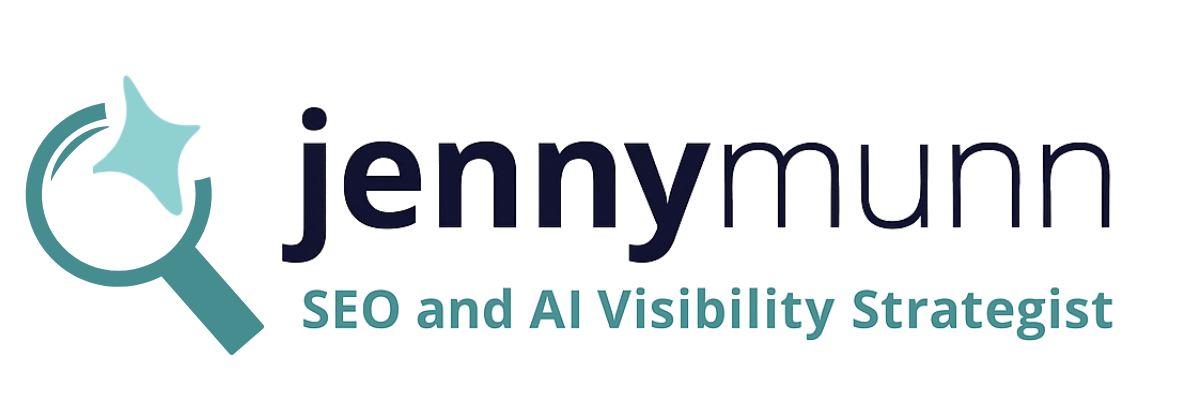With the arrival of AI, we not only gain a new way of thinking, adapting, and acting, but also a new set of vocabulary to learn. Here are several terms to familiarize yourself with as traditional search shifts to AI search and visibility.
In context to AI and SEO Visibility, think of AI like nesting dolls:
- Artificial Intelligence (AI)
- -> Machine Learning (ML)
- -> Natural Language Processing (NLP)
- -> Large Language Models (LLMs)
- -> GPT (a specific LLM by OpenAI)
- -> ChatGPT (an app using GPT)
- -> GPT (a specific LLM by OpenAI)
- -> Large Language Models (LLMs)
- -> Natural Language Processing (NLP)
- -> Machine Learning (ML)
- AI (artificial intelligence) = technology that simulates human intelligence (self-driving cars, recommendation engines, ChatGPT)
- Machine Learning = a way AI learns patterns from data
- Natural Language = AI focused on human language
- LLM (Large Language Model) = The brains — they generate (write, summarize, reason, code). An LLM is a type of model trained on massive text datasets to predict and generate language. It’s the category or technology. Examples of LLMs:
- GPT = OpenAI’s brand of LLM
- Claude (by Anthropic)
- Gemini (by Google)
- GSE (Generative Search Experience)/SGE (Search Generative Experience) = Search engines using LLMs to generate answers instead of links
- Answer Engines = The application of LLMs for search/discovery. Think ChatGPT, Gemini, Claude, Perplexity.
- Gemini – Google’s AI Assistant (formerly known as Bard)
- AI Overviews = formerly known as SGE, search generative experience, this is the AI-generated summary at the top of Google search results.
- GEO (Generative Engine Optimization) = optimizing for generative search
- AEO (Answer Engine Optimization) = the process of “optimizing/influencing” for inclusion in answer engines.
- Perplexity = an AI Search Engine
- AIO = artificial intelligence optimization
- SEO = traditionally? Search Engine Optimization
- SEO = in the days of AI? Search Everything Optimization
- GSE / AI Overviews = Google’s branded version of this shift inside search results.
- E-E-A-T (Experience, Expertise, Authoritativeness, Trustworthiness) = the credibility signals AIs lean on to decide who to cite.
- Agentic AI = an AI system that can autonomously make decisions and accomplish a specific goal with limited supervision
- Multimodal Search = the way users engage across different platforms and media types to explore, evaluate, and decide by typing, speaking, or imagery
- Fan-Out Queries = When an AI tool takes your prompt and breaks it into multiple related sub-questions behind the scenes – helping it cover more ground and return a richer response.
- Chunking = The process of breaking content into smaller, digestible sections so AI can better understand and retrieve it.
- Retrievability = How easily a piece of content can be found and used by an AI when it’s generating a response.
- Entities = Important “things” AI recognizes — like people, places, products, or concepts. Entities help AI understand context and relationships between topics.
- Knowledge Graphs = A structured web of facts and relationships between entities that helps AI and search engines “connect the dots” about your content.
- Vector Alignment = How well your content aligns – mathematically – with what an AI understands as relevant or similar in meaning.
- Retrieval-Augmented Generation (RAG) = an AI framework that goes outside of its training data to fetch relevant, external information before generating a response.
- Prompt Tuning = aligning your site with the patterns of how users phrase questions in AI platforms. It involves strategic use of headings, language, schema, and external reputation.
- Lexical Retrieval = a fancy phrase essentially meaning “word match”; in AI Search, word choice and usage (aka “keywords”) and aligning with the language your audience uses, along with semantics and context, still matter.
Stay tuned for the ever-expanding glossary of AI SEO terminology marketers need to stay up to date with.
